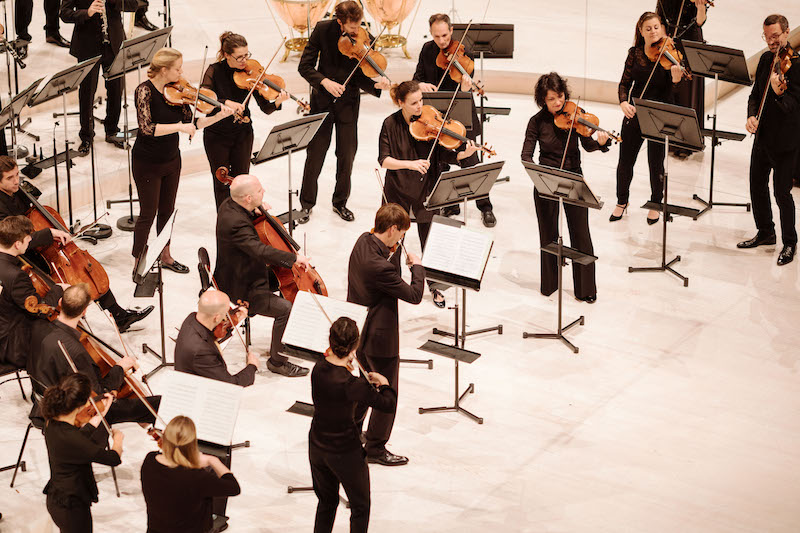Founded just over two decades ago by a group of friends/musicians who wished to come together and play, the Mahler Chamber Orchestra has a rather unusual approach to music. Not only are its 60 or so members citizens of as many as 20 countries, there is an ideal balance of individual personality and ensemble playing within the orchestra’s sections. These seemingly disparate characteristics weld together to form a unique, concise and incredible chamber music-like clarity to their performances with the smoothest of strings, brass and wind sections that are expected from the top-flight European orchestras.
 Mahler Chamber Orchestra in Helsinki in 2017. Photograph supplied
Mahler Chamber Orchestra in Helsinki in 2017. Photograph supplied
Similarly, much care has gone into the choice of repertoire for their two concerts at this year’s Adelaide Festival. Program Two – which was the first to be performed – featured Mozart’s final three symphonies. Programming them within a single concert is a generous and taxing choice for performers and audience alike. However any difficulties were soon erased by the quality of the playing, the placement of an interval after each of the three works and the great acoustics of Adelaide Town Hall. To hear all three symphonies live within a single evening is perhaps the musical equivalent of viewing the final six Caravaggio paintings within a single gallery, as I did recently in New York.
From late Amadeus, it was onto the youthful, vernal Schubert in his Third Symphony and the gargantuan Brucknerian tableau of his most popular symphony, No 4, the ‘Romantic’, for the second concert (Program One) the next night.
Given the close and long-standing relationship between Conductor Laureate Daniel Harding and the musicians, these were seamless, vital performances with the Bruckner holding the pride of place. Back in the 80s when everybody was (re)discovering Mahler, I thought that Bruckner and perhaps Berlioz would be the next to undergo such a renaissance. This performance of the ‘Romantic’ was an inspired one wherein Harding corralled his forces with the utmost authority and precision – conducting predominantly with the right hand, achieving a sense of proportion and sonic balance which was all too appropriate for this work. It’s hard to imagine Bruckner as chamber music (although he did write a rather overlooked quintet) yet, such was the sense of clarity and intimacy that this fine conductor achieved. And without the aid of a score!
As in the early Schubert, a strong sense of affinity with nature shone through, together with a strong sense of rusticity bought about by both composers’ use of folk melody and dance. In such a finely detailed performance, it’s hard not to lead onto late Tchaikovsky and indeed Gustav Mahler (this orchestra’s namesake) who would also use the ländler and other dances to great effect. Performances of this calibre are few and far between and with such incisive string playing, I wish that I’d been able to hear them playing Henze in Sydney half a decade ago.











Comments
Log in to join the conversation.